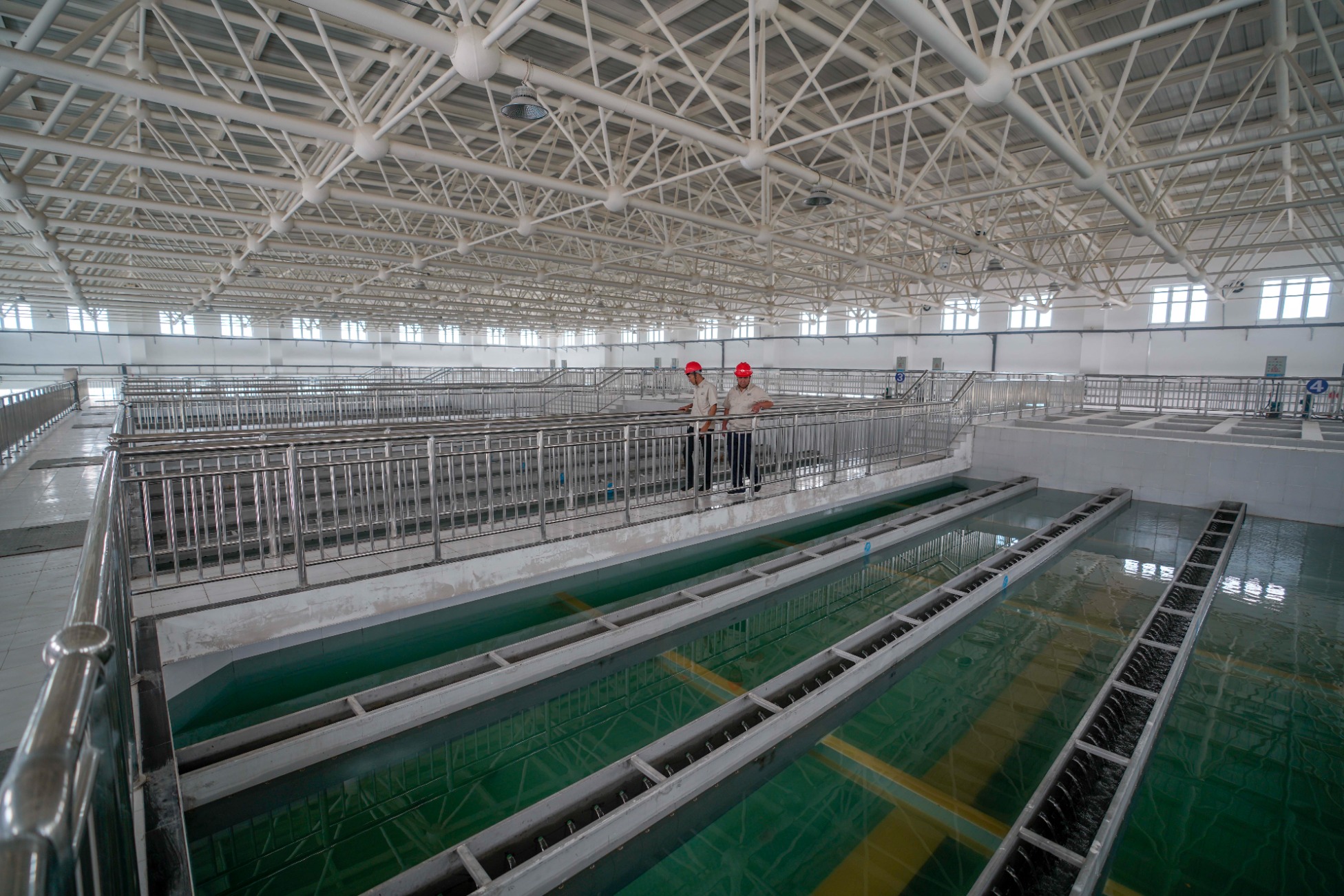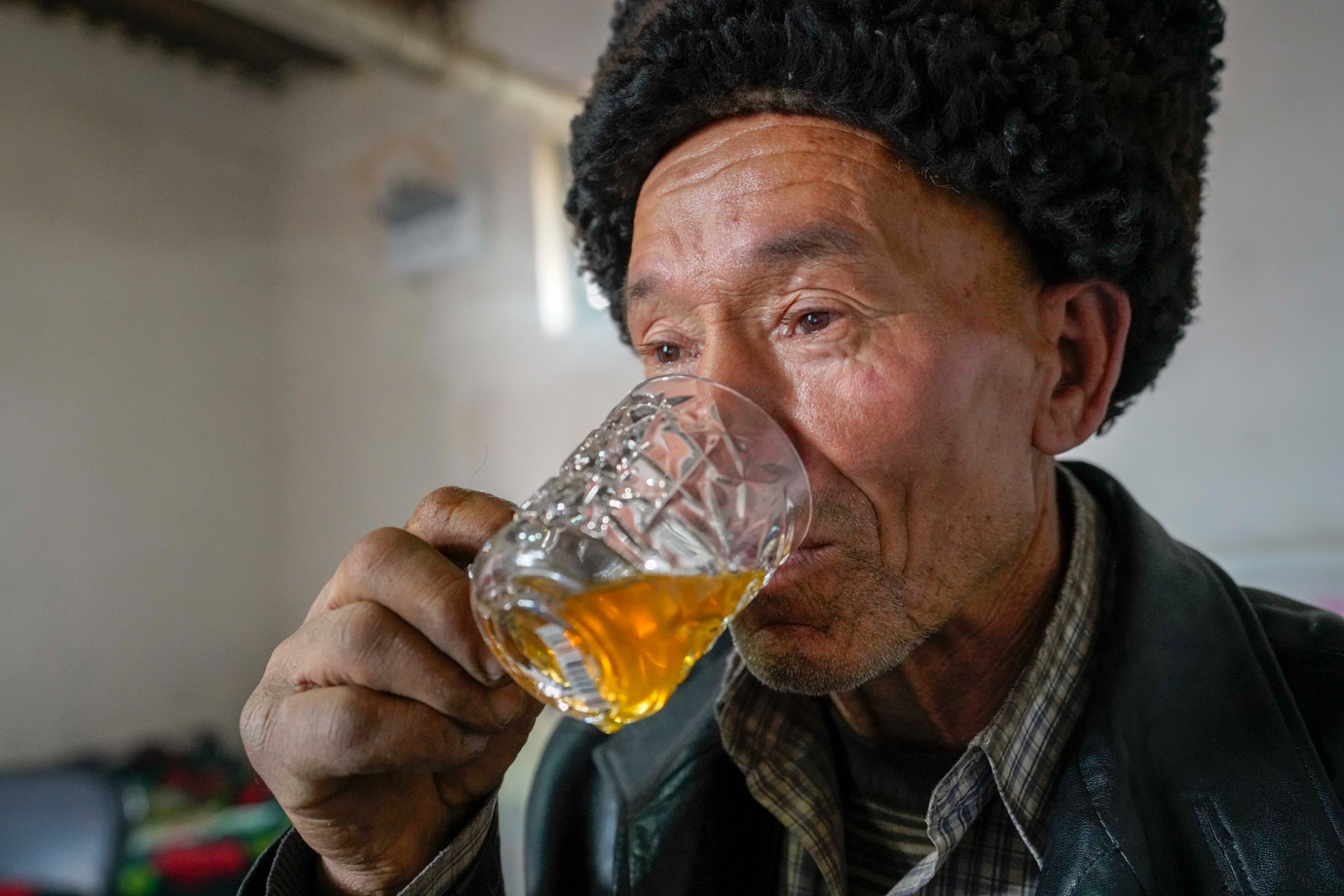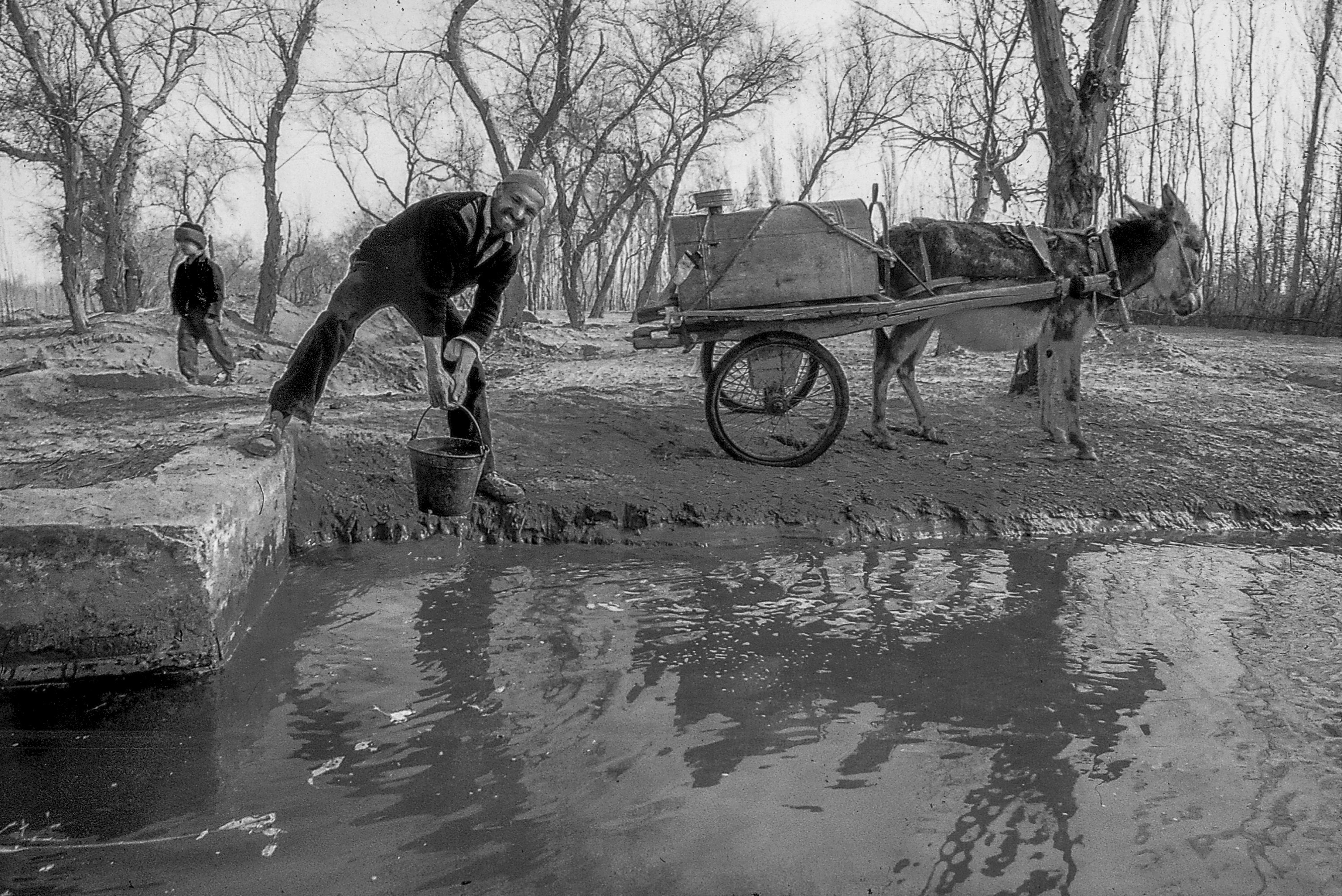URUMQI, June 19 (Xinhua) -- More than 20 years on, 43-year-old Yusup Keyum can still recall the overwhelming smell that emanated from the hole broken in the frozen puddle in his village in winter, the only source of water in his childhood.
"It reeked of rotten leaves and livestock waste," said Yusup.
Yusup, who heads rural drinking water safety projects in Kashgar City in northwest China's Xinjiang Uygur Autonomous Region, was born in a village in southern Xinjiang. As one of the driest places in the country, water was a rarity there, let alone potable water.
Local residents used to get water from nearby puddles formed from rain, snow or rivers. They would use pieces of cloth to filter out sand, leaves and worms. The water was not only dirty, but also bitter and salty in some places.
In Payzawat County of Kashgar Prefecture, over half of the land is saline-alkali soil. "The water is so salty that local people won't add salt to their dishes," said Jia Zhonghu, a local lawmaker.

Workers checks equipment in a water treatment plant in Kashgar, northwest China's Xinjiang Uygur Autonomous Region, June 8, 2020. (Xinhua/Zhao Ge)
This "bitter" life is now just a memory. The water quality in Payzawat County met safe drinking standards in early June thanks to a safe drinking water project, making potable water a reality across Xinjiang.
The stride from bitter and salty puddle water to safe tap water was not easy.
Before the late 1990s, puddles were the main water sources for most people in Xinjiang. "There was a tap water supply in the early 1990s, but not stable. So we used both puddle water and tap water," said Yusup. In 1995, when he went to college in another city, the puddle in his village was buried for good.
Water projects like drilling wells and building water towers and small water treatment plants picked up pace in the late 1990s, offering millions of people access to a generally stable water supply.

A villager drinks tea at his home in Buzak Village, Hotan County, northwest China's Xinjiang Uygur Autonomous Region, Nov 24, 2019. (Xinhua/Zhao Ge)
In Buzak Village in Hotan Prefecture's Hotan County stands a monument commemorating the water improvement projects in the county starting in 1994. Just about 100 meters away is a deserted puddle that reminds people of the "bitter" life decades ago.
Hebibulla Tohti, a 68-year-old local villager, had been drinking water from the puddle until 1994. "We used gourds to get water from the puddle, but now it's hard to find one in our village."
Yusup went to Kashgar City's rural tap water general station for work after graduation in 2001, and witnessed the expanding access to tap water as more water treatment plants were built.
But water at that time was still not fully drinkable as the well water went through minimal treatment. Many invisible pollutants posed a threat to people's health.
"There are no suitable water sources nearby, and those suitable are too far away and too expensive for water diversion," said Jia.

File photo of a farmer fetching water in Hotan Prefecture, northwest China's Xinjiang Uygur Autonomous Region, in the 1990s. (Xinhua/Shen Qiao)
Drinking water safety in rural areas has been high on the Chinese government's agenda as it is an important part of the country's anti-poverty campaign.
Over 1.7 billion yuan (about 240 million U.S. dollars) was offered as financial support for a project kicked off in 2019 to help bring safe drinking water to Payzawat County, with the pipelines spanning over three counties and their total length topping 1,800 km.
The completion of the project marked the full coverage of safe tap water for households across Xinjiang.
"The tap water we drink now in Xinjiang tastes as good as bottled water," Yusup said. "Our life is getting sweeter too." ■



